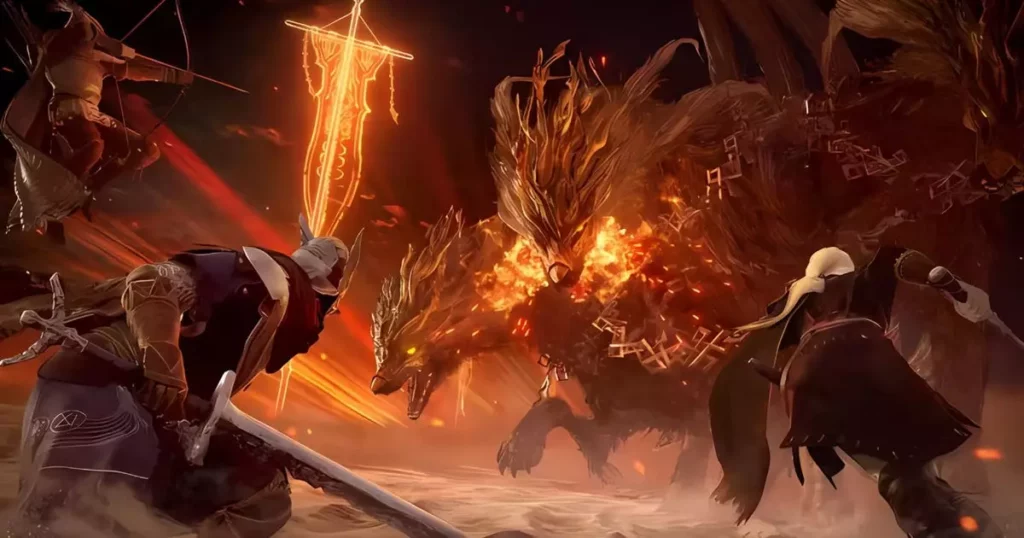In an industry awash with innovation yet often bogged down by formulaic designs, Elden Ring Nightreign emerges as a standout title that deftly reimagines cooperative gameplay. Directed by Junya Ishizaki, the game introduces a mechanic where players revive fallen teammates through the act of striking them with swords. At first glance, this unorthodox practice might seem trivial or even ridiculous to some. However, its underlying message cannot be missed: camaraderie is sometimes forged through absurdity, emphasizing the very human connections that develop in chaotic environments. While the gaming genre often prioritizes safety and healing, Nightreign flips this expectation on its head, offering a refreshing take that encourages players to take risks and engage with one another dynamically.
Although the concept may evoke laughter among players initially, the implications are profound. Traditional revival mechanics usually cast healing as a passive endeavor, lurking in the shadows of gameplay. Here, the revival involves a more intense interaction that thrusts players into the heart of action, encouraging strategic collaboration rather than solitary heroism. In a world sometimes dominated by competitive online play, this humorous yet strategic mechanic paves a way for cooperation that can enrich the gaming experience.
The Forward-Thinking Design Philosophy
One of the most fascinating aspects of Elden Ring Nightreign lies in its promise to transform the way players approach boss fights. Ishizaki hints at evolving mechanics that will require players to rethink their strategies, challenging the expectations that many modern games have instilled. The mere suggestion of adaptability suggests a depth to gameplay that can be easily underappreciated. After all, the world of video games greatly suffers from repetitive play styles that leave little room for innovation once players have settled into their groove.
However, the vagueness surrounding the specifics of how these strategies will evolve is both tantalizing and treacherous. Does “evolution” imply a mere adjustment of statistics, or could it lead to genuine behavioral shifts in boss encounters as they sustain damage? The community collectively holds its breath, eager for the latter option to come true. A more immersive battle—not just in the sense of visuals but also in the reactions from opponents—could promise a gaming experience that genuinely reflects player prowess rather than reliance on historical strategies.
The Dance Between Tradition and Innovation
As Nightreign inches closer to release, the tension between tradition and innovation becomes more palpable. Ishizaki’s approach has resonated with those seeking to stay rooted within familiar archetypes; however, it has sparked dialogue about the necessity for innovation. Sticking to tried-and-true character types might please nostalgic players, but it does beg the question: are we inadvertently stifling creativity in the quest for comfort?
The concept of a “macho wizard” displays inventive character design that risks alienating traditionalists while appealing to niche communities. While offering a balance between classic gameplay paradigms and novel class options could forge a more significant player investment, it remains crucial for FromSoftware to consider player feedback and adapt accordingly post-launch. Will they embrace diverse character designs that stray from the ordinary after the initial release, or will they stick with their comfort zone?
The Community-Driven Evolution
The anticipation that envelops the gaming community as Nightreign nears its release signifies more than just eagerness; it denotes a longing for a game that values audience engagement beyond passive consumption. Elden Ring Nightreign has the potential to not only capture player interest but also inspire a robust dialogue among its community. How will players adapt their tactics? In what creative ways will they interact through the mechanics presented? This commitment to evolving alongside the audience speaks volumes about the developers’ intent to create an engaged player base.
Additionally, the emphasis on a dynamic cooperative gameplay experience allows players to forge new connections with one another. It goes beyond gameplay mechanics; it represents a shift in relational dynamics within the gaming world. This enhanced element of teamwork—founded upon absurd mechanics—holds the promise to redefine how players perceive and engage in multiplayer experiences.
Through the eclectic lens of humor and engaging strategy, Elden Ring Nightreign sets the stage for monumental gameplay that challenges the status quo while delightfully skewering the seriousness that often envelops video games. The potential for transformation lies not just within the game itself, but also in the burgeoning community that will rally around it. In an undulating dance between tradition, creativity, and player collaboration, Nightreign just might carve its niche within the expansive universe of video gaming, marking itself as both a heartfelt homage and a bold new frontier.









Leave a Reply